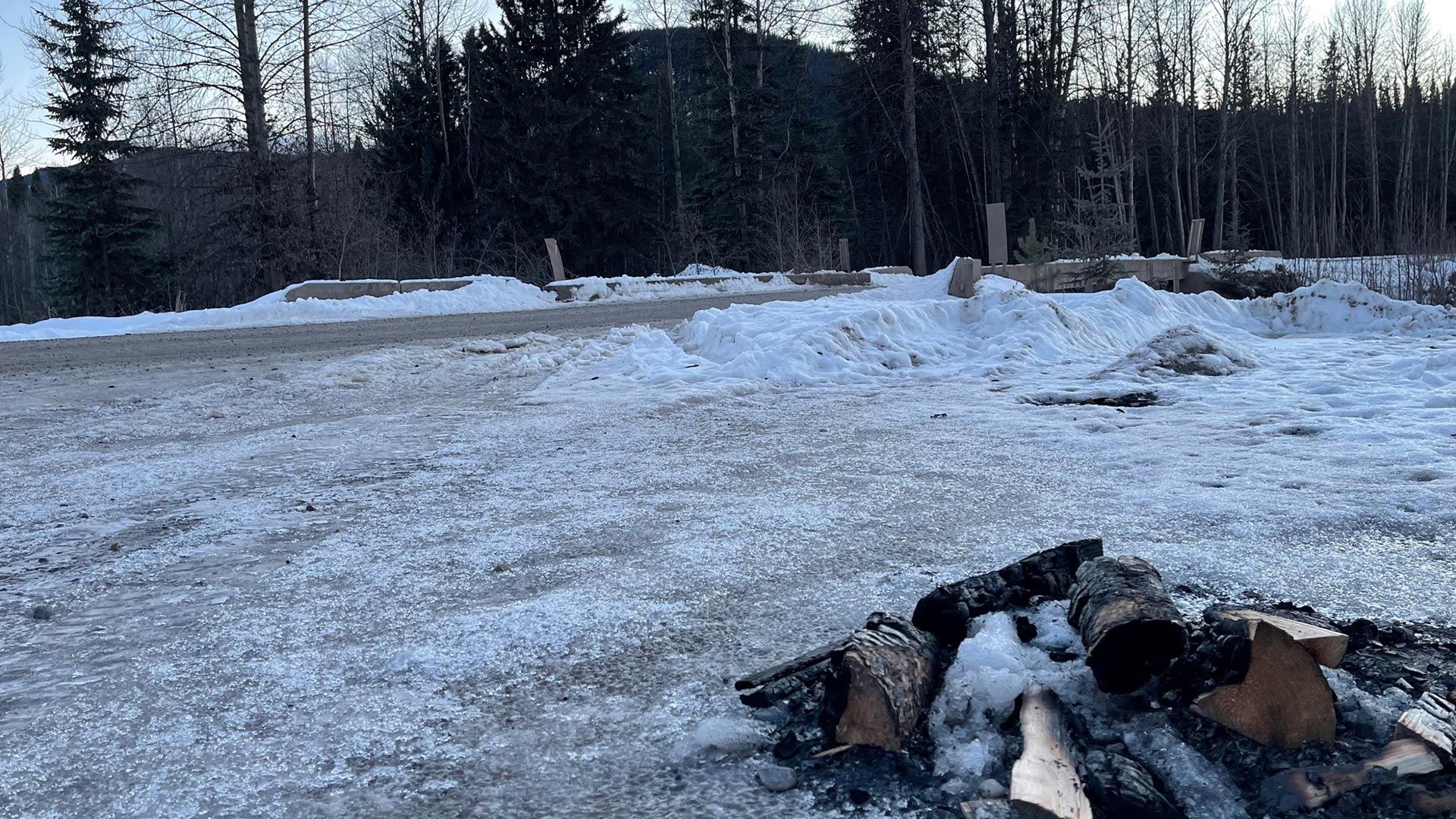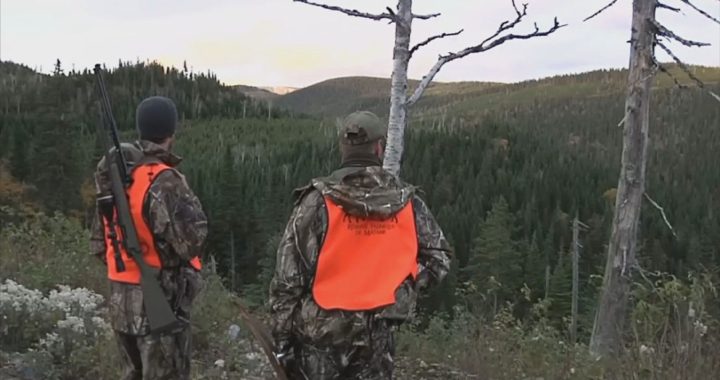For three consecutive years, the RCMP has raided Wet’suwet’en camps over the pipeline conflict in northern British Columbia.
In the latest raid which included dogs and Mounties with high-powered assault rifles, Sleydo’, the spokesperson for the Gidmit’en Access Point was one of more than 30 people who were arrested.
She and her family have lived in a land re-occupation for near a decade.
“But it actually goes back to 2009 when Gidim’ten and other Wet’suwet’en had a series of all-clans meetings to start erecting cabins on our territory,” she tells APTN News.” There was one proposed for each clan territory. This is the site of the one that was proposed for Gidimt’en.”

Sledyo’ says the first land re-occupation was at Unis’tot’en which is associated with one of 13 house groups but falls under Gil-Seyhu Clan located 66 km up Forestry Rd.
In 2018, Gidimt’en Access Point was built 20 km south as a part of the resistance to the pipeline.
She identifies herself as a Wet’suwet’en woman and mother first and that being a land defender comes with those roles.
“I always identify myself as Wet’suwet’en woman, obviously a mother of three children and I don’t particularly like to refer to myself as a land defender or water protector. I think that those things are I do but I think those things are inherent in being a Wet’suwet’en woman,” she said.
Coastal GasLink (CGL) is building a 670 km pipeline that if completed will carry fracked natural gas from Dawson Creek in northeastern B.C., to a terminal in Kitimat on the coast.
The company has signed agreements with 20 First Nation Indian Act bands, which have control over reserve land and not territory, along the route according to the company.
CGL says 50 per cent of the pipeline is complete.
In a video posted to social media, Wet’suwet’en Hereditary Chief Woos said the hereditary chiefs were never consulted.
Sleydo’ says they’re upholding Wet’suwet’en law.
“The fact that the Wet’suwet’en hereditary chiefs and the Gitxsan hereditary chief had title and never extinguished their title – that means that we still have title to the land and that we are the decision-makers, that our clan system and our decision-making system in that clan governance is the decision-making body,” she says.
The Wet’suwet’en hereditary chiefs have always maintained that they don’t want a pipeline running through their territory.
Read More:
Raids, racism and reconciliation: It’s time to ‘break up’ the RCMP says expert on N2N
The Delgamuukw decision: Putting the Wet’suwet’en conflict in perspective
In 2019, CGL won an injunction against the blockades that were stopping construction.
What followed was the first major RCMP raid on the territory.
“All of the work that was happening in support across the nation shut down Canada happened in a response to raids on Wet’suwet’en in 2020,” she says. “There was a lot of political work going on, a lot of meetings going on but the pandemic kind of just put everything brought everything to a halt”
Even though the pandemic, work on the pipeline has continued – so did the conflict.
In late September, the company planned to put the pipeline under the Wedzin Kwa (Morice River).
Blockades went up again.
“It has been mostly centered around protecting our river, that’s been the biggest issue the whole time that has been the biggest issue for any pipeline to cross Wet’suwet’en territory is the issue of them crossing Wedzin Kwa.”
Sledyo’ takes issue with their action in the territory being called a protest in both the courtroom and with media because she says that isn’t an accurate representation.
“I don’t think that accurately depicts who we are and what we are doing, a protestor can protest anything but for us we are upholding Wet’suwet’en law, we are not protesting against anything particular thing, we are upholding Wet’suwet’en law, so I think that narrative needs to shift,” she said.

Coastal GasLink says it’s using the safest method to pass under the river.
“Trenchless crossings are proven to allow the pipe to be installed under the water body without ever affecting the flow of the river or stream. Currently, there are thousands of trenchless crossings throughout BC, operating safely under rivers and streams of all sizes,” the statement says.
In mid-November, the hereditary chiefs ordered the company to leave and more blockades went up.
The RCMP presence increased after the company complained that 500 workers were “trapped” behind them.
Eventually, the raids came and more than 30 people were arrested including a journalist and documentary maker.
“You know you look at other occupations and other like so-called protests how they frame, you don’t see that kind of violence coming at people,” says Sleydo’. “You only see that kind of people when it’s Indigenous people defending their land and their water.“
Sledyo’ said one of the conditions of her release is that she travel straight to her cabin and can only access the territory for cultural purposes.
She compared the judge behind the injunction, Supreme Court of British Columbia Justice Marguerite Church, to an Indian agent.
“It reminds me of when we had the reserve pass system and weren’t allowed to be off the reserve unless we had a pass from the Indian agent, and the Indian agent is justice Church in this injunction who gets to decide if I can come and go from the territory and how I come and go, “ she said.
“It’s CGL, a private industry that is putting those decisions to the court and insisting I be restricted and that every other Indigenous people be restricted from accessing this territory.”










